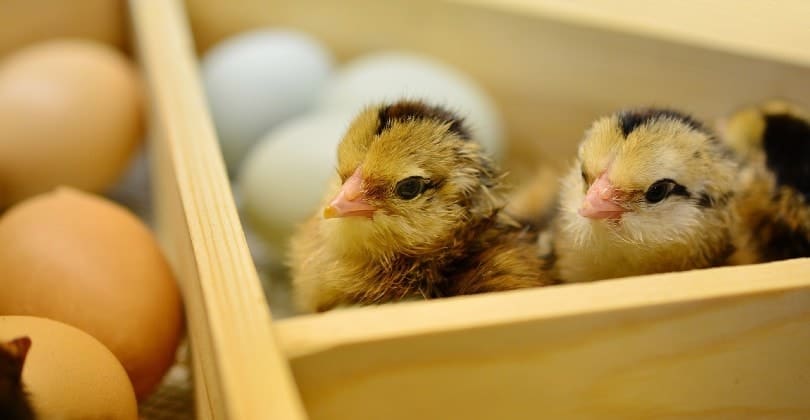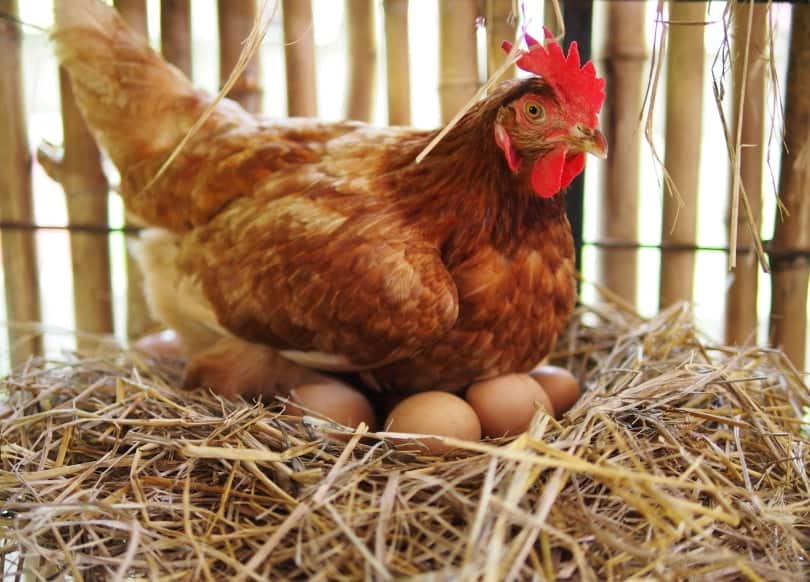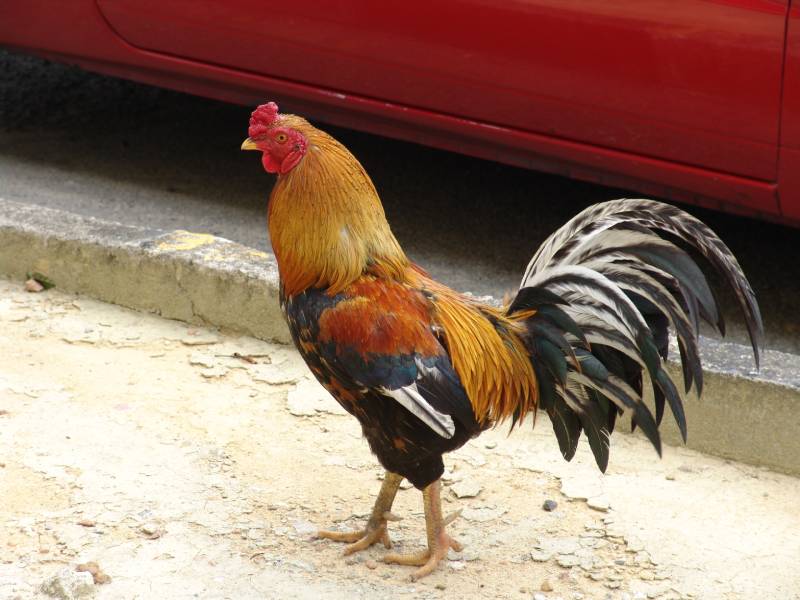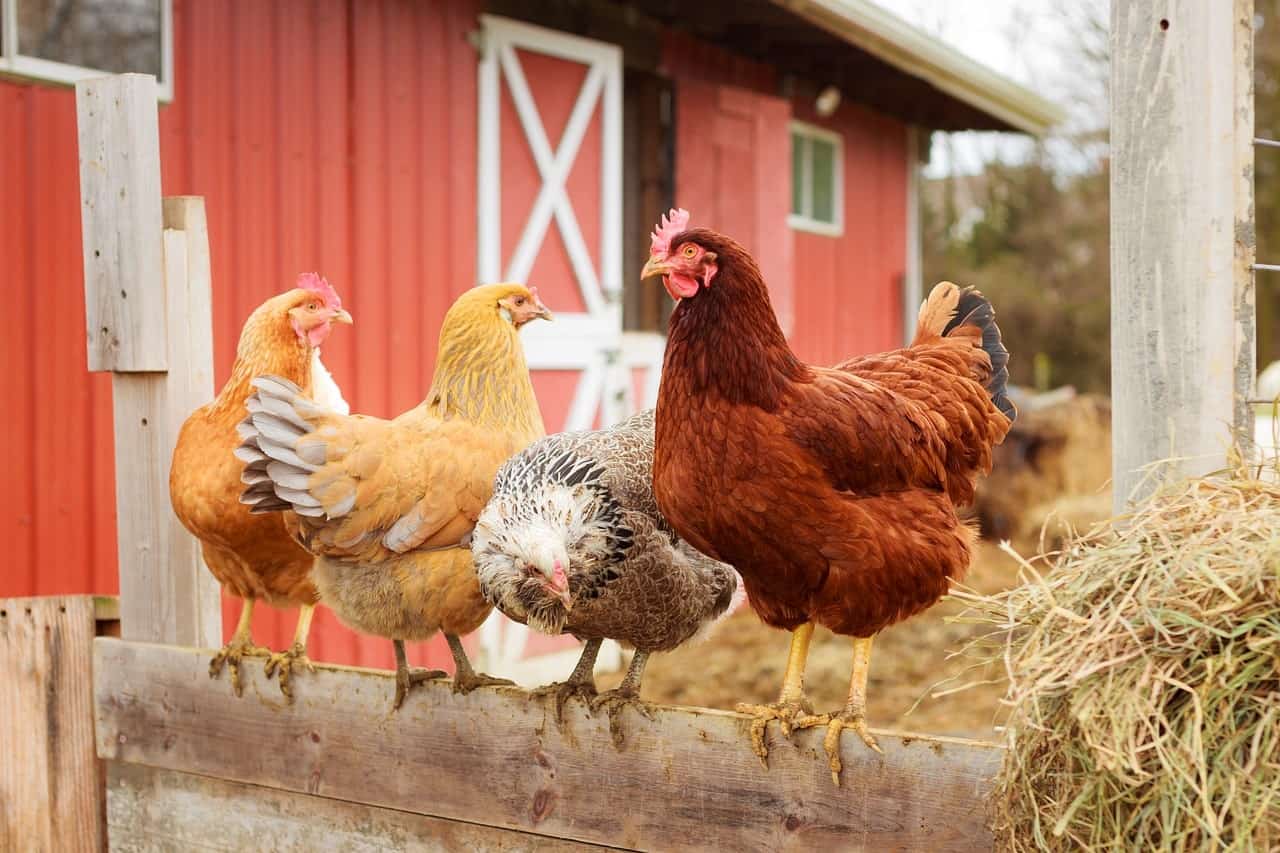While we are all familiar with chickens, their history is still widely unknown. Evidence suggests that the domesticated chickens that we know today originated in southeast Asia approximately 8,000–10,000 years ago. Before that, chickens were wild, roaming the jungles and foraging for food. Over 60 breeds of chickens today are descendants of the wild red junglefowl, native to southeast Asia.
However, wild chicken ancestry dates back to the dinosaur age. Let’s take a look at this animal’s interesting history.

Where Do Chickens Come From?
In 2003, a paleontologist named Jack Horner found a 68-million-year-old Tyrannosaurus Rex fossil in a stretch of land between Wyoming and Montana. Upon inspection, scientists discovered that proteins in the tissues of the fossil prove a relationship to domesticated chickens today.
While the wild red junglefowl is a known ancestor of chickens, the grey junglefowl is likely responsible for modern-day chickens’ yellow skin. Red junglefowl are tropical wild birds that can fly much better than chickens today.
Once these birds were domesticated, people used them for fighting, religious rituals, and sacrifices. Chickens were introduced to Europe during the 8th century B.C., where they became a significant part of European livestock. Chickens then made their way to Greece, Africa, and Romans in southern Italy.
The Romans were particularly interested in using chickens as a food source for their military. They started breeding chickens for meat and eggs. With that, selective breeding started. Chickens meant for food were larger, while egg layers were lighter and smaller.
When chickens reached Britain, eating their meat was banned due to Druidism, a Celtic religion. Chickens in Britain were then used for fighting.

Hen Fever
From 1845–1855, the United States had an obsession with chickens known as Hen Fever. This was thanks to Queen Victoria in England. The chickens that she kept were easy to care for and had a unique appearance. People became fascinated with the birds all across England. She sent the eggs of her chickens to her relatives, which created a frenzy of breeding and selling chickens. Eventually, Hen Fever reached America via Spanish explorers who brought the birds over with them. Chickens became a common sight across the continent.
Arrival In the United States
The first poultry show in the United States was held in 1849. This piqued interest in chickens even more, and farmers started to show more care toward their chickens. They deemed them more valuable due to their popularity.
Special diets for egg production and increased health of the chickens were developed. People realized that chickens could be profitable.
Industrialization
Mrs. Wilmer Steele is credited for the industrialization of chickens in the early 1900s. After raising 500 broiler chickens, she was so profitable that she built a chicken shelter big enough to house 10,000 more.
After splitting the chickens into two purposes, meat or egg production, the health of the chickens increased again. Egg-laying chickens could lay eggs all winter long now as their genetic efficiency improved, as did the quality of the meat from the broiler chickens.
As the broiler chicken industry continued to grow at the turn of the 20th century, it helped create businesses and jobs for people in hatcheries and feed mills. Incubators were used to help hatch eggs and provide heat to the chicks.

Chickens Today
Today, chickens vastly outnumber humans in the world, at nearly three chickens per person! People around the world raise chickens. Backyard chicken owners are more knowledgeable than ever before thanks to new information about chicken diets, behaviors, and needs. While most chickens are kept for production, these birds can quickly become cherished pets too. With proper care, they can live to be 10–15 years old.
Do All Chickens Lay Eggs?
All hens lay eggs, and they can do so with or without a rooster present. If they lay eggs without a rooster, the eggs will be infertile. Many people think that you need a rooster for a hen to produce eggs. This is not true and can only lead to more roosters being created and the breeding continuing. Your chicken population could expand quickly.
Egg-laying hens will provide you with fresh eggs, and most will lay one egg per day. Factors can change this, like weather, the bird’s health, nutrition, and the sense of nearby predators. Many hens start to produce fewer eggs when there are less than 12 hours of daylight.

Do We Eat Roosters?
Male chickens are roosters and female chickens are hens. Since most people who keep chickens only keep females, hens are the ones primarily used for eggs and meat.
It’s impossible to tell if the chicken that you buy at the market came from a male or a female bird. When chickens are raised solely for meat, they are processed for human consumption before they are sexually mature. There are no physical differences between the two sexes yet to be able to distinguish the males from the females. At this stage, the meat looks and tastes the same.
Fully mature roosters can be and still are eaten around the world. However, this practice is less common in Western cultures. Hens are far more economical to raise and use for meat. Keeping hens with roosters means trouble will inevitably occur. The roosters will fight with each other over the hens, and the breeding will leave you with more chickens than you may like. The roosters would have to be kept away from the hens in separate housing. Multiple roosters aren’t needed if you are interested in breeding chickens. You just need one or two at the most. It’s easy to house them away from the hens, but it’s harder to house multiple roosters to raise them for meat.
In addition to their aggression when they’re mature, fully grown rooster meat tastes different from that of hens. It requires different preparation and cooks longer than hen meat, using slow, moist heat. Rooster meat should not be roasted. It has a stronger flavor than hen meat. It’s also tougher, stringier, and drier. Sometimes it can be a darker color.


Final Thoughts
Chickens have come a long way from being wild foragers to pets. By understanding their history, we can learn to better appreciate the species.
Our knowledge of their story has led to better care of the birds. Improving their diets, housing, and medical care has led to the chickens’ health and longevity. People continue to benefit from these improvements to chicken care today.
Related articles:
- Do Chickens Have Nipples? What You Need to Know!
- Norwegian Jaerhon Chicken
- Which State Raises the Most Chickens?
- How Long Can Chickens Be Left Alone? (Vet Reviewed Facts)
Featured Image Credit: Cparks, Pixabay
